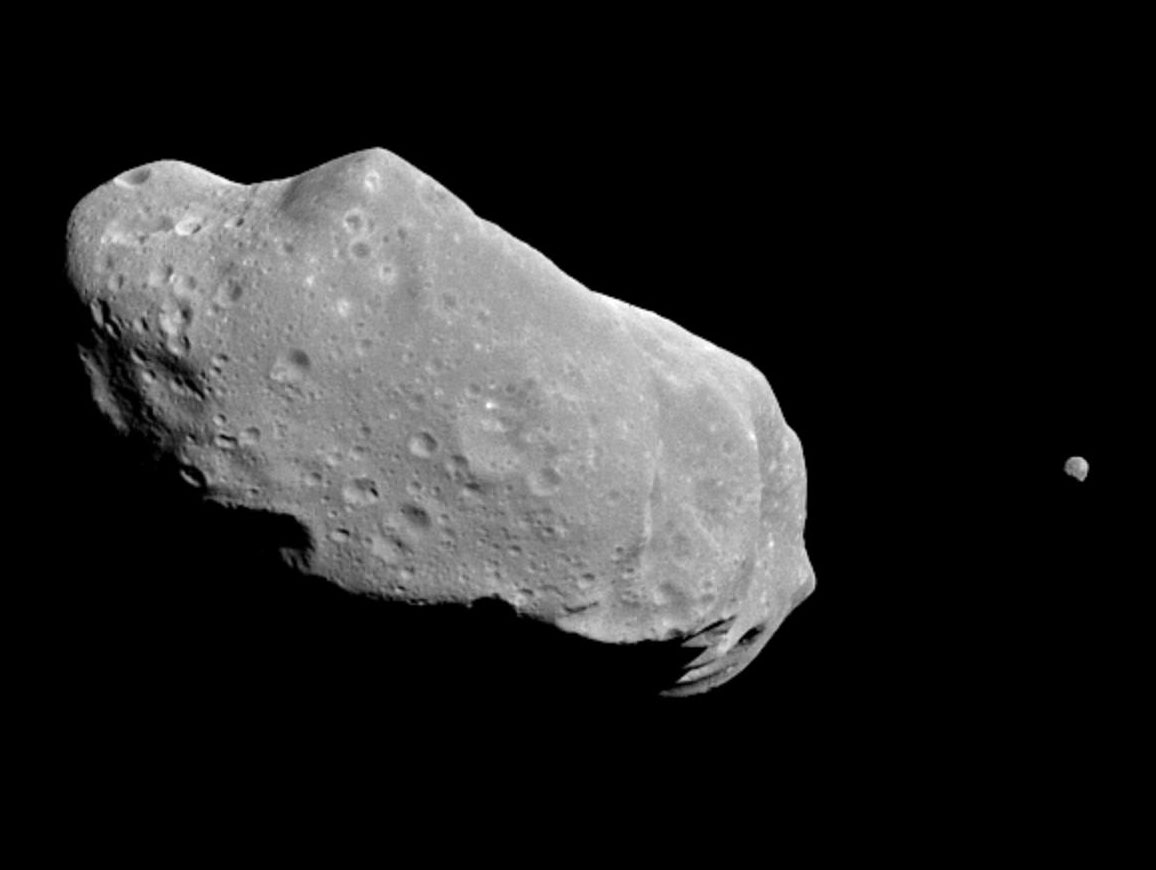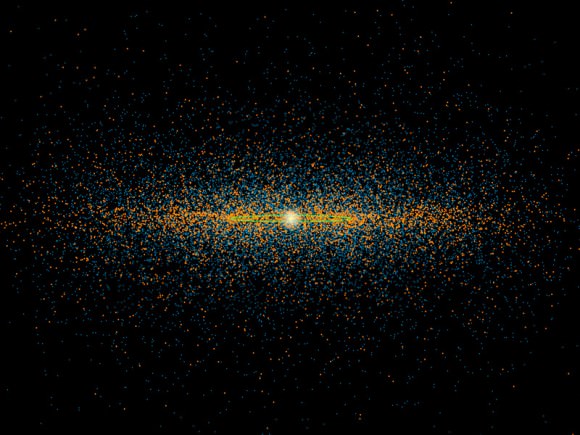Answer: a LOT. And there’s new ones being discovered all the time, as this fascinating animation by Scott Manley shows.
Created using data from the IAU’s Minor Planet Center and Lowell Observatory, Scott’s animation shows the progression of new asteroid discoveries since 1980. The years are noted in the lower left corner.
As the inner planets circle the Sun, asteroids light up as they’re identified like clusters of fireflies on a late summer evening. The clusters are mainly positioned along the outer edge of Earth’s orbit, as this is the field of view of most of our telescopes.
Once NASA’s WISE spacecraft begins its search around 2010 the field of view expands dramatically, as well as does the rate of new discoveries. This is because WISE’s infrared capabilities allowed it to spot asteroids that are composed of very dark material and thus reflect little sunlight, yet still emit a telltale heat signature.
While Scott’s animation gives an impressive — and somewhat disquieting — illustration of how many asteroids there are knocking about the inner Solar System, he does remind us that the scale here has been very much compacted; a single pixel at the highest resolution corresponds to over 500,000 square kilometers! So yes, over half a million asteroids is a lot, but there’s also a lot of space out there (and this is just a 2D top-down view too… it doesn’t portray any vertical depth.)
While most asteroids are aligned with the horizontal plane of the Solar System, there are a good amount whose orbits take them at higher inclinations. And on a few occasions they even cross Earth’s orbit.
(Actually, on more than just a few.)
Read: 4700 Asteroids Want to Kill You
An edge-on view of the Solar System shows the positions of asteroids identified by the NEOWISE survey. About 4700 potentially-hazardous asteroids (PHAs) have been estimated larger than 100 meters in size. (NASA/JPL-Caltech)
As far as how many asteroids there are… well, if you only consider those larger than 100 meters orbiting within the inner Solar System, there’s over 150 million. Count smaller ones and you get even more.
I don’t know about you but even with the distances involved it’s starting to feel a little… crowded.
You can see more of Scott Manley’s videos on YouTube here (including some interesting concepts on FTL travel) and learn more about asteroids and various missions to study them here.
Inset image: the 56-km (35-mile) wide asteroid Ida and its satellite, seen by the Galileo spacecraft in 1993. (NASA)



That video was awesome. Thanks for posting it:).
Fantastic! Who says space is empty?
WOW
That looks like the work of a super computer somewhere. Excellent
Excellent way of visualizing these ideas, Scott! Congratulations! The GAIA mission data analyzers will have their work cut out for them, sifting and organizing and separating all these solar system objects from the background stars (though supposedly GAIA isn’t expected to discover that many *new* asteroids). This movie is a great teaching tool to show how wild our solar system is. Thank you!
I guess it depends on how you define “a lot”. If you take 5% the mass of the moon, crush up half of it into bits of varying sizes, form Ceres and the other 3 largest asteroids with the other 50%, and then scatter it evenly along the 100 million mile track between the orbits of Mars and Jupiter, that’s the asteroid belt. It’s not like the asteroid belt of the 2nd Star Wars movie. If you fired a spaceship randomly through the asteroid belt, your probability of hitting an asteroid is very low.